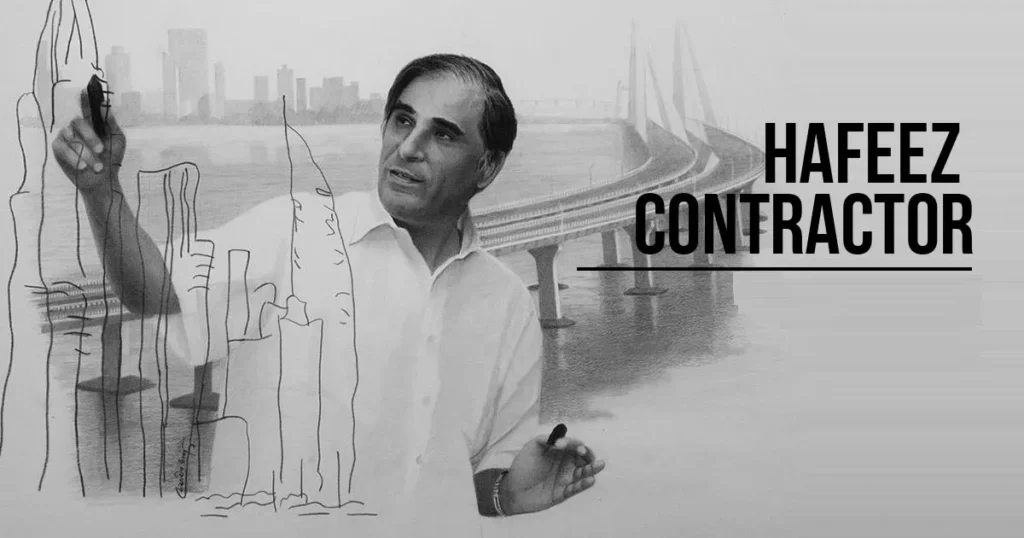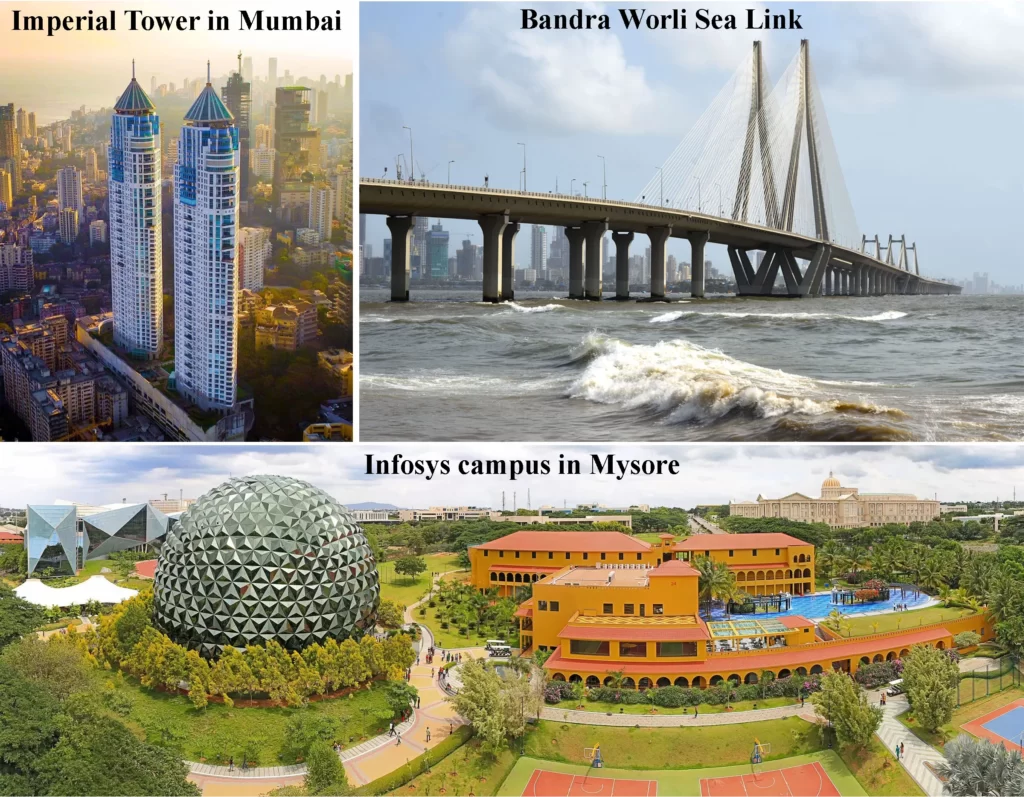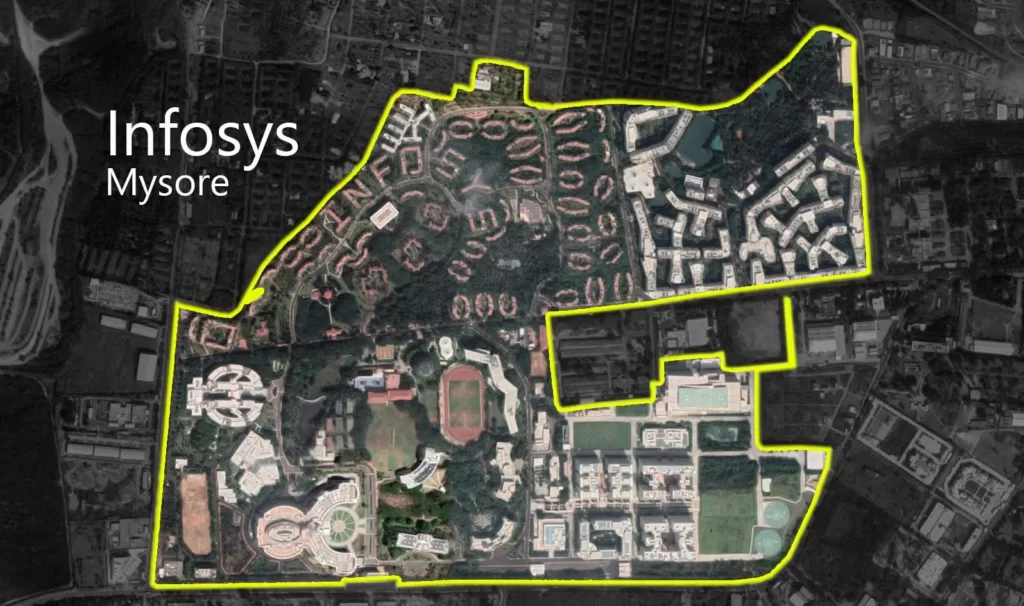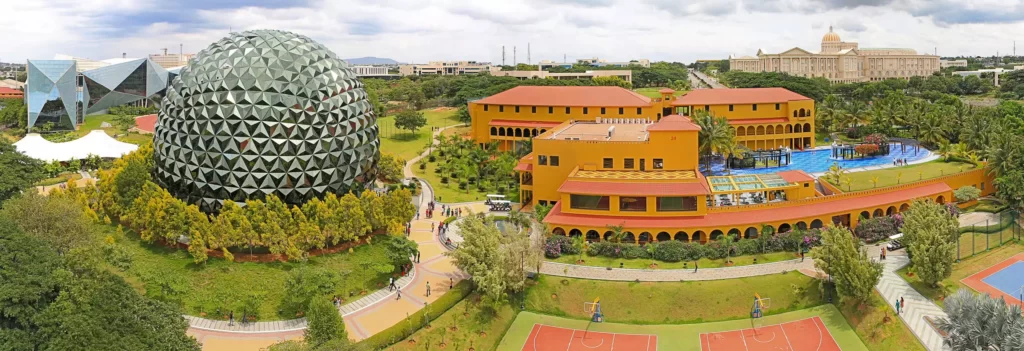If you want to know about the staircase design or landscape garden or requirements for disabled persons in a building, please click the link.
Introduction
Hafeez Contractor is a renowned Indian architect and urban designer. Born in Mumbai in 1950, he grew up in a family of builders and architects. He completed his education in architecture from the University of Mumbai in 1975, and then went on to complete his master’s degree in urban design from Columbia University in New York City in 1977.

After completing his education, Hafeez Contractor began his career as an apprentice architect with the firm T. Khareghat and Associates in Mumbai. In 1982, he established his own firm, Hafeez Contractor, which has since become one of the leading architecture firms in India.
Throughout his career, Hafeez Contractor has designed a wide range of buildings, including commercial and residential complexes, hospitals, hotels, and educational institutions. He is known for his innovative and sustainable designs, as well as his ability to create functional spaces that are aesthetically pleasing.
Some of his notable projects include the Imperial Tower in Mumbai, the Bandra Worli Sea Link, and the Infosys campus in Mysore. He has received numerous awards and recognition for his work, including the Padma Bhushan award, one of India’s highest civilian honors.

Overall, Hafeez Contractor is considered one of the most influential architects in India, and his work has had a significant impact on the architecture industry in the country.
1) Early Life and Education of Hafeez Contractor
Hafeez Contractor was born in Mumbai, India, in 1950, into a family of builders and architects. From an early age, he was exposed to the world of architecture and design through his family’s construction business. He was fascinated by the process of designing and constructing buildings, and this interest would eventually lead him to pursue a career in architecture.
Hafeez Contractor completed his early education in Mumbai and went on to study architecture at the University of Mumbai, where he graduated in 1975. During his time at university, he was influenced by the works of several prominent architects, including Le Corbusier and Louis Kahn. He was particularly drawn to their modernist designs, which emphasized simplicity, functionality, and efficiency.
After completing his degree in architecture, Hafeez Contractor decided to pursue further studies in urban design. He applied to several universities in the United States and was eventually accepted into the master’s program in urban design at Columbia University in New York City. He graduated from Columbia in 1977 with a master’s degree in urban design.
During his time at Columbia, Hafeez Contractor was exposed to a wide range of design philosophies and approaches. He was particularly interested in the works of the American architect and urban designer, Kevin Lynch, who emphasized the importance of creating spaces that were both functional and aesthetically pleasing.
Hafeez Contractor was also influenced by the works of the German architect, Walter Gropius, who emphasized the importance of collaboration and interdisciplinary design.
Overall, Hafeez Contractor’s early life and education played a significant role in shaping his approach to architecture and design. His exposure to the world of architecture through his family’s construction business, combined with his studies in architecture and urban design, helped to develop his passion for creating functional, sustainable, and aesthetically pleasing spaces.
2) Career of Hafeez Contractor
Hafeez Contractor’s career as an architect and urban designer spans over four decades, during which he has established himself as one of the most influential figures in the architecture industry in India. He is known for his innovative and sustainable designs, as well as his ability to create functional spaces that are aesthetically pleasing.
One of Hafeez Contractor’s early notable projects was the Kanchenjunga Apartments in Mumbai, which he designed in 1983. The building is considered a landmark of modernist architecture in India and is known for its unique triangular shape and innovative use of space. Another notable project of his was the Infosys campus in Mysore, which he designed in 1997. The campus is known for its sustainable design and use of natural materials.
In the years that followed, Hafeez Contractor continued to design a wide range of buildings, including commercial and residential complexes, hospitals, hotels, and educational institutions. One of his most iconic projects is the Bandra Worli Sea Link, a cable-stayed bridge that connects the western suburbs of Mumbai with South Mumbai. The bridge is considered a symbol of Mumbai’s modernity and has become one of the city’s most recognizable landmarks.
Other notable projects by Hafeez Contractor include the Imperial Tower in Mumbai, the DLF Gateway Tower in Gurgaon, and the W Hotel in Mumbai. His designs are known for their use of sustainable materials and technologies, as well as their sensitivity to the local environment and culture.
Hafeez Contractor’s impact on the architecture industry in India has been significant. He has helped to establish a new era of modernist architecture in the country, which emphasizes functionality, sustainability, and innovation. His designs have had a profound impact on the way buildings are designed and constructed in India, and his influence can be seen in the work of many younger architects and designers.
Overall, Hafeez Contractor’s career has been marked by a deep commitment to creating spaces that are not only functional but also aesthetically pleasing and sustainable.
3) Awards and Achievements of Hafeez Contractor
Hafeez Contractor has received numerous awards and recognition throughout his career for his contributions to the architecture industry. Some of the most notable awards and accolades he has received include:
- Padma Bhushan: In 2016, Hafeez Contractor was awarded the Padma Bhushan, one of the highest civilian awards in India, for his contributions to the field of architecture.
- Best Architectural Design Award: Hafeez Contractor has received this award multiple times from the Indian Institute of Architects for his innovative and sustainable designs.
- Best Hospitality Design Award: Hafeez Contractor has been recognized for his designs of hotels and resorts, including the Leela Kempinski Hotel in Mumbai and the Trident Hotel in Gurgaon.
- Lifetime Achievement Award: In 2019, Hafeez Contractor was honored with a Lifetime Achievement Award by the Indian Institute of Architects for his outstanding contributions to the architecture industry.
Hafeez Contractor’s contribution to the architecture industry in India has been significant. He has played a major role in shaping the modernist architecture movement in the country, and his designs have been recognized for their innovative use of space, sustainable materials, and sensitivity to the local environment and culture.
He has also been a strong advocate for sustainable design practices, and has incorporated eco-friendly technologies and materials into many of his designs. In addition to his contributions to architecture, Hafeez Contractor has also been active in promoting urban design and planning in India. He has worked closely with government agencies and local communities to create functional and sustainable urban spaces.
Overall, Hafeez Contractor’s influence on the architecture industry in India has been immense. His innovative designs, commitment to sustainability, and advocacy for functional and aesthetically pleasing spaces have helped to establish a new era of modernist architecture in the country, and his influence can be seen in the work of many younger architects and designers.
4) Hafeez Contractor’s Architecture Style
Hafeez Contractor’s architecture style is characterized by its modernist and functional approach, combined with a sensitivity to the local environment and culture. His designs are known for their innovative use of space, sustainable materials, and incorporation of new technologies.
One of the defining elements of Hafeez Contractor’s style is his use of geometry and form. His buildings often feature unique shapes and designs that incorporate triangles, circles, and other geometric shapes. He also emphasizes the use of natural light and ventilation, incorporating features like skylights and courtyards to create a sense of openness and connectivity.
Another important aspect of Hafeez Contractor’s style is his use of sustainable materials and technologies. He has been a strong advocate for eco-friendly design practices, and many of his designs incorporate elements like solar panels, rainwater harvesting systems, and green roofs.
Over the years, Hafeez Contractor’s style has evolved to reflect changing trends in the architecture industry. While he remains committed to his modernist and functional approach, his designs have become increasingly influenced by local culture and traditions. He has also begun to focus more on creating spaces that are not just functional, but also aesthetically pleasing and welcoming.
The impact of Hafeez Contractor’s style on the architecture industry in India has been significant. He has helped to establish a new era of modernist architecture in the country, which emphasizes functionality, sustainability, and innovation. His designs have had a profound impact on the way buildings are designed and constructed in India, and his influence can be seen in the work of many younger architects and designers.
Overall, Hafeez Contractor’s architecture style is characterized by its innovative use of space, sustainable materials, and sensitivity to the local environment and culture. His commitment to functional and aesthetically pleasing design has helped to shape the architecture industry in India, and his influence is likely to continue to be felt for years to come.
5) Design Philosophy of Hafeez Contractor
Hafeez Contractor’s design philosophy is based on the idea that architecture should serve the needs of the people who use it. He believes that the purpose of architecture is to create spaces that are not only functional but also aesthetically pleasing, and that are in harmony with their surroundings.
One of the key aspects of Hafeez Contractor’s design philosophy is his emphasis on simplicity and functionality. He believes that architecture should be simple and easy to understand, and that it should be designed with the user’s needs in mind. He also believes that buildings should be functional, and that they should serve a specific purpose.
Another important aspect of Hafeez Contractor’s design philosophy is his focus on sustainability and green design. He believes that architecture should be environmentally responsible, and that it should incorporate sustainable technologies and materials whenever possible. He also believes that buildings should be designed to minimize their impact on the environment, and that they should be energy-efficient and designed with the local climate in mind.
Hafeez Contractor’s design philosophy also emphasizes the importance of context and cultural relevance. He believes that buildings should be designed in a way that is sensitive to their surroundings, and that they should be designed to reflect the culture and history of the people who use them. He also believes that architecture should be inclusive, and that it should be designed to accommodate a diverse range of users.
Overall, Hafeez Contractor’s design philosophy is characterized by his commitment to simplicity, functionality, sustainability, and cultural relevance. He believes that architecture should serve the needs of the people who use it, and that it should be designed with a deep understanding of the local context and environment.
6) Hafeez Contractor’s Approach to Design
Hafeez Contractor’s approach to design is heavily influenced by his practical and functional perspective. He believes that architecture should serve the needs of the people who will use the building and that a building’s design should be a response to its context and purpose. At the same time, he also places a high value on aesthetics and the visual impact of his designs.
One of the factors that influence Contractor’s work is the cultural and historical context of the building’s location. He believes that it is important to incorporate local cultural influences into the design of a building, to create a sense of connection with the community and to pay homage to the cultural heritage of the region. For example, in his design for the Infosys campus in Mysore, he incorporated traditional Indian architectural elements such as courtyards and colonnades, while also incorporating modern design features.

Another factor that influences Contractor’s work is his focus on functionality and practicality. He believes that a building should be designed to meet the needs of the people who will use it, and that a building’s design should be informed by its intended purpose. For example, in his design for the Bandra Worli Sea Link, he prioritized functionality and safety, incorporating features such as advanced seismic design and an aerodynamically designed shape to withstand high winds.
In terms of balancing functionality with aesthetics, Contractor believes that both are important and should be integrated into the design process. He does not believe that functionality should come at the expense of aesthetics, or vice versa. Instead, he strives to create designs that are both practical and visually striking, incorporating innovative features that serve a purpose while also contributing to the overall aesthetic of the building.
Overall, Hafeez Contractor’s approach to design is shaped by a combination of cultural and historical influences, a focus on functionality and practicality, and a commitment to creating visually striking designs. This approach has helped him to create some of the most iconic buildings in India and has established him as a leading figure in the architecture industry.
7) Hafeez Contractor’s Most Notable Projects
Hafeez Contractor has been involved in many notable projects throughout his career. Three of his most well-known projects are the Imperial Tower, the Bandra Worli Sea Link, and the Infosys campus in Mysore.
Imperial Tower:

The Imperial Tower is a skyscraper located in Mumbai, India. Completed in 2010, it stands at 254 meters tall and is one of the tallest buildings in the country. The tower features a unique design, with a curved facade that gives it a sleek, modern appearance.
It also incorporates sustainable design elements, such as a rainwater harvesting system and energy-efficient lighting. The Imperial Tower has had a significant impact on the architecture industry in India, serving as an example of the country’s growing focus on sustainable and innovative design practices.
Bandra Worli Sea Link:

The Bandra Worli Sea Link is a cable-stayed bridge that connects the suburbs of Bandra and Worli in Mumbai. Completed in 2009, it spans 5.6 kilometers and is one of the longest bridges in the country. The bridge features a unique design, with two steel towers that support the cables that hold up the roadway.
The Bandra Worli Sea Link has had a significant impact on transportation infrastructure in India, providing a faster and more efficient route for commuters and helping to ease traffic congestion in Mumbai.
Infosys Campus in Mysore:

The Infosys campus in Mysore is a sprawling complex that serves as the headquarters for the IT services company Infosys. Completed in 2004, it covers an area of 350 acres and includes multiple buildings, a lake, and outdoor recreational areas. The campus features a unique design, with buildings that are connected by walkways and courtyards.

It also incorporates sustainable design elements, such as a rainwater harvesting system and energy-efficient lighting. The Infosys campus has had a significant impact on the architecture industry in India, serving as an example of how large-scale commercial developments can be designed in a way that is both functional and sustainable.
Overall, Hafeez Contractor’s notable projects demonstrate his innovative approach to design and his commitment to sustainability and functionality. These projects have had a significant impact on the architecture industry in India, influencing the way buildings, bridges, and commercial developments are designed and constructed.
8) Criticisms of Hafeez Contractor’s Work
Like any architect, Hafeez Contractor has faced criticism for some of his projects. Some of the criticisms that he has faced include:
- Lack of originality: Some critics have accused Hafeez Contractor of copying designs from other architects and failing to come up with truly original concepts. Some of his projects have been accused of being too similar to existing structures in other parts of the world.
- Focusing on commercial projects: Another criticism that Hafeez Contractor has faced is that he focuses too much on commercial projects, such as office buildings and shopping centers, and does not pay enough attention to public spaces or affordable housing.
- Ignoring context: Some critics have accused Hafeez Contractor of ignoring the context of the locations where he builds, creating structures that clash with their surroundings or fail to take into account the local culture and traditions.
In response to these criticisms, Hafeez Contractor has made efforts to address them in his work. For example, he has spoken about the importance of creating buildings that are functional and efficient, as well as visually striking. He has also emphasized the need for sustainability and has incorporated environmentally-friendly features into many of his projects.
In terms of criticism about focusing on commercial projects, Hafeez Contractor has stated that he believes that good architecture can have a positive impact on people’s lives, regardless of the type of building it is. He has also been involved in several public projects, such as the Mumbai International Airport and the redevelopment of the Mumbai Zoo.
In response to accusations of ignoring context, Hafeez Contractor has emphasized the importance of understanding the local culture and traditions when designing buildings. He has stated that he takes inspiration from the local surroundings and incorporates elements of the local culture into his designs.
Overall, while Hafeez Contractor has faced some criticism, he has taken steps to address it and has continued to push the boundaries of architecture in India.
9) Legacy of Hafeez Contractor
Hafeez Contractor has had a significant impact on the architecture industry in India, both through his designs and his advocacy for the profession. His legacy includes:
- Revolutionizing commercial architecture: Hafeez Contractor’s innovative designs for commercial buildings, such as the Imperial Towers and the Bandra Worli Sea Link, have set new standards for modern architecture in India. His work has redefined what it means to design buildings for both functionality and aesthetics, and has influenced many other architects in the industry.
- Contributing to sustainable architecture: Hafeez Contractor’s work has also contributed to the growth of sustainable architecture in India. He has designed buildings that incorporate energy-efficient features, green spaces, and other environmentally-friendly elements. This has helped to raise awareness about the importance of sustainable design and has inspired other architects to follow suit.
- Advocating for the architecture profession: Hafeez Contractor has been a vocal advocate for the architecture profession in India. He has worked to improve the status of architects, including by pushing for more professional recognition and better working conditions. He has also been involved in efforts to promote architecture education in India and has helped to create opportunities for young architects to develop their skills.
In terms of his influence on other architects, Hafeez Contractor’s work has served as a source of inspiration and guidance for many. His innovative designs and commitment to sustainability have set new standards for the industry and have encouraged others to push the boundaries of what is possible in architecture.
Overall, Hafeez Contractor’s legacy in the architecture industry in India is significant. His contributions have helped to shape the profession and have set a high bar for architects in the country. His work continues to inspire and influence the next generation of architects, ensuring that his impact on the industry will be felt for many years to come.
10) Hafeez Contractor’s Impact on Sustainable Architecture
Hafeez Contractor is known for his commitment to sustainable architecture and green design. He believes that architects have a responsibility to create buildings that are not only functional and visually striking but also environmentally responsible.
One way that Contractor incorporates sustainable design principles into his projects is through the use of renewable energy sources. He has designed buildings that incorporate solar panels and other renewable energy technologies to reduce the building’s reliance on fossil fuels. For example, in his design for the Imperial Tower in Mumbai, he incorporated solar panels on the roof to generate electricity and reduce the building’s carbon footprint.
Another way that Contractor incorporates sustainable design principles is through the use of green building materials. He believes that using eco-friendly building materials can help reduce the environmental impact of the construction industry. In his designs, he uses materials such as recycled steel, bamboo, and low-emission glass, which are more sustainable alternatives to traditional building materials.
Contractor also incorporates sustainable technologies into his designs, such as rainwater harvesting and greywater recycling systems, which reduce the demand for potable water and minimize water waste. He has also designed buildings with natural ventilation systems that reduce the need for air conditioning and improve indoor air quality.
Overall, Hafeez Contractor’s use of renewable energy sources, green building materials, and sustainable technologies in his projects demonstrates his commitment to sustainable architecture and green design. His work serves as an example to other architects and builders, encouraging them to adopt sustainable design practices to reduce the environmental impact of the construction industry.
11) Hafeez Contractor’s Influence on the Indian Architecture Industry
Hafeez Contractor is widely recognized as one of the most influential architects in India. His work has had a significant impact on the architecture industry in the country, influencing other architects and contributing to the growth and development of the industry.
One way that Contractor has influenced the architecture industry in India is through his approach to design. He is known for his innovative and bold designs, which have challenged traditional notions of architecture and pushed the boundaries of what is possible. His use of cutting-edge technology and materials has set a new standard for architecture in India and has inspired other architects to adopt similar approaches in their work.
Contractor’s commitment to sustainable architecture and green design has also had a significant impact on the industry. His use of renewable energy sources, green building materials, and sustainable technologies has set an example for other architects and builders, encouraging them to adopt sustainable design practices to reduce the environmental impact of the construction industry.
Another way that Contractor has influenced the architecture industry in India is through his contribution to the development of urban areas. He has been involved in several urban design projects that have helped shape the growth and development of cities in India. For example, his design for the Bandra-Worli Sea Link in Mumbai has had a significant impact on the transportation infrastructure of the city, reducing congestion and improving connectivity.
Contractor’s influence on the architecture industry in India extends beyond his design work. He has been an advocate for the profession, promoting the importance of architecture and design in creating livable and sustainable communities. He has also been involved in mentoring young architects and has supported the development of architectural education in the country.
Overall, Hafeez Contractor’s influence on the architecture industry in India has been significant. His innovative designs, commitment to sustainable architecture and green design, and contribution to the development of urban areas have set a new standard for architecture in the country and have inspired other architects to push the boundaries of what is possible.
12) Conclusion
In conclusion, Hafeez Contractor is a visionary architect and urban designer whose contributions to the architecture industry in India have been significant. His innovative designs, commitment to sustainable architecture and green design, and contributions to the development of urban areas have set a new standard for architecture in India and have influenced other architects to adopt similar approaches in their work.
From his early years as a student of architecture to his current status as one of the most influential architects in India, Hafeez Contractor has constantly pushed the boundaries of what is possible and has challenged traditional notions of architecture. His legacy in the industry will continue to inspire future generations of architects and urban designers to create livable, sustainable, and beautiful communities that make a positive impact on society and the environment.